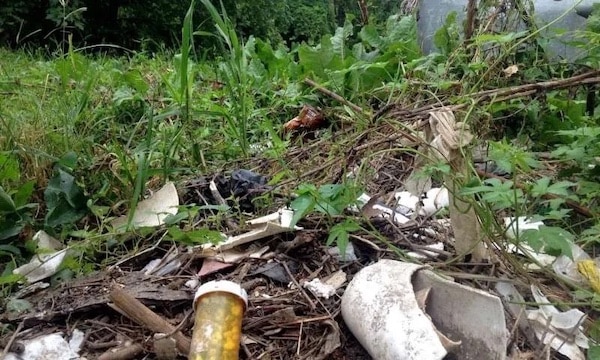Imagine for a moment that when you ate food a part of your body siphoned off the energy and stored it in structures which did not contribute to the overall homeostasis of the organism, but instead converted the energy into cellular structures which did not give back to the body. Instead these entities were unproductive and undigestible, forcing the body to adapt to them in a further loss of energy. As these entities grew larger the body would become weaker and increasingly malfunction until, overwhelmed, it would no longer be able to function at all. The rift in its metabolism would go from being a disruption to an assassin.
In the human body this is a fair description of cancer, and in the ecology it refers to much of the technological infrastructure of industrial capitalism. Both the generation of cancer within the human microcosm and the generation of techno-industrial capitalism within the world ecology bring disfigurement, inflammation and death in their wake.
Karl Marx, not usually thought of as an ecological philosopher, articulated this way of understanding ecological disruption as “metabolic rift” early in his career as a writer and philosopher. John Bellamy Foster, in his “Marx’s Ecology”, retrieved this analytical tool from the dustbin, helping to energize the renewal of ecosocialist thought.
The idea of metabolic rift names the dynamics between human and non-human nature as “metabolic relations”; arguably a more intimate and creaturely metaphor than “systems thinking” or “interdependence” (or Morton’s “mesh”).
The basic idea is that what humans consume we must return, whether literally in the form of human biological waste (which prior to modern municipal systems was an important manure) or in forms of collective waste (the return of decaying civilizational artifacts or collective industrial waste materials) in forms that can be re-consumed by the earth. This is ecological metabolism or the “circulus” of early eco-socialist thinkers.
One benefit to the concept of metabolic rift is that it neatly preserves a distinction between human and non-human nature while also asserting their unity within one metabolic system (this is somewhat theoretical benefit which appeals to critical theory nerds for the most part).
Two more practical uses quickly follow. One is that metabolic rift clearly identifies capitalism for what it is: the rift itself. Capitalism dematerializes the economy so that people are hypnotized by the trade in imaginary currencies and now, digital goods, while forgetting the inescapable material economy in which we live (also known as the ecology). To put it another way, capitalism posits as the ultimate good capital itself (in the form of currency) instead of the metabolism itself. Yet the metabolism is the actual world we live in (Morton’s “symbiotic real”) and its health determines the health of all human beings (and nonhuman beings, who should be an object of our ethical care as well).
To put it plainly, Capitalism disregards the global metabolism by siphoning off energy from it to turn it into money. It does so by generating inefficient industrial-technological structures which are disruptive and destructive from an energy point of view (a metabolic point of view) but are efficient at generating one thing: capital, and this for only a very small number of people: capitalists themselves.
The accomplishment of this feat requires the metabolic rift—it is the rift. Thus the concept usefully combines ecological and economic thought into one analysis, as well as clearly pointing the way to the enemy of most living things on earth for the last two hundred years: not just the current form of industrial capitalism, but capitalism itself, the ideology which instead of seeking avenues of human creativity and flourishing within a global energy metabolism which sustains all life seeks only the generation of a one way shute pouring money into their own pockets.
A system with capital as its organizing principle will not simply generate another form of energy (“money is just energy, man”) rather the immaterial, anecological nature of currency (at its heart) tends towards the disruption of the true material economy in which we live.
The second practical take way from the concept of metabolic rift is that it provides a formula for application wherever we live. Through it we can identify rifts in our local metabolism and find ways of closing them. This can be applied in our houses, in our neighbourhoods, in our cities, and wherever else our sphere of personal influence extends. By re-establishing the circulus -the circulation of energy within a harmonious metabolism-we can improve the health of any mini-ecology and its denizens, a victory in a minor key but still something.

